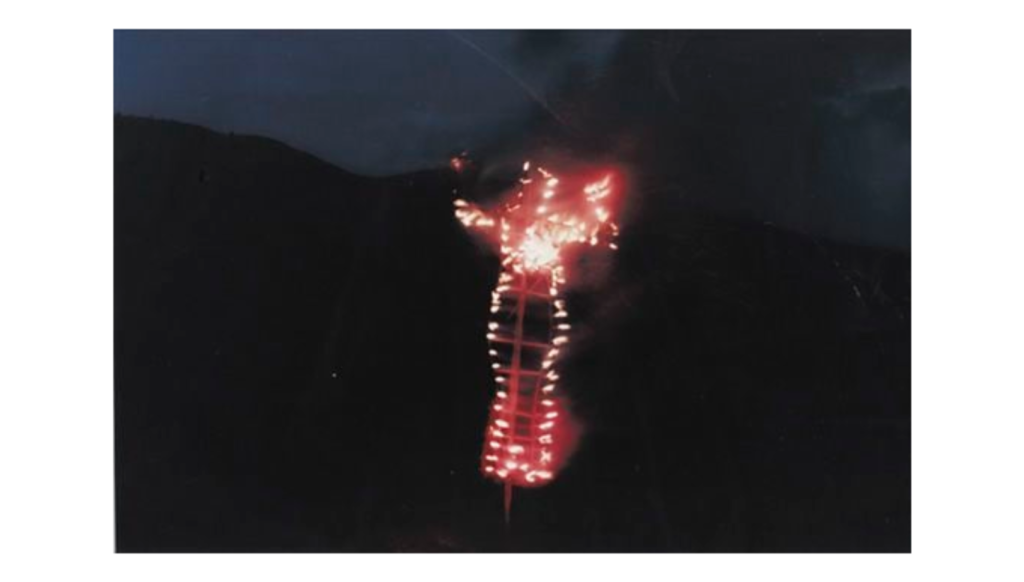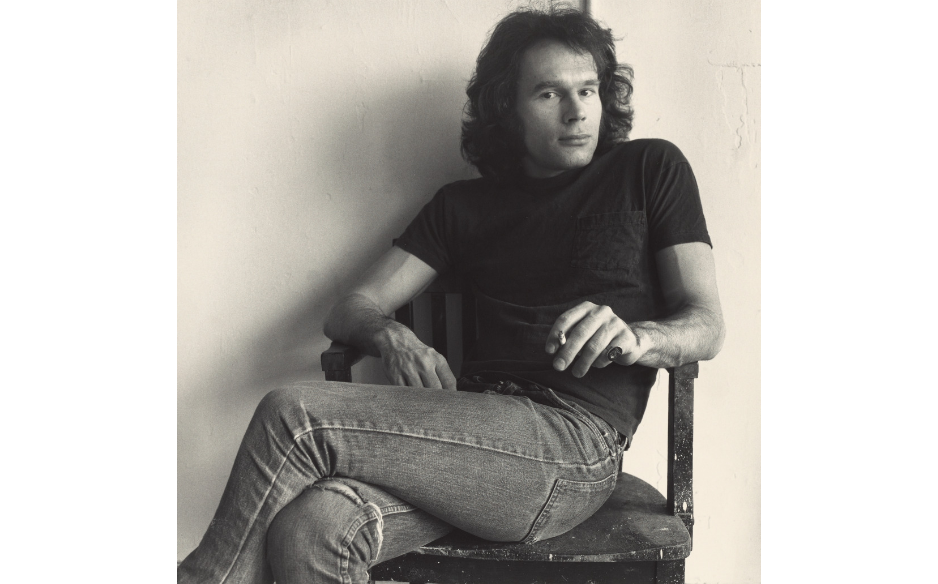Ana Mendieta
Silueta Works in Mexico
Ed. 15/20
1976
Siluetas - Bodies in movement
04.07.2020

“Siluetas – Bodies in movement” is the second of three appointments that take place at the Foundation between June and August, to present Antonio Dalle Nogare’s collection. This trilogy will show, in a linear but not necessarily chronological way, how the works of the artists exhibited in the collection are born, looking at the same themes from different angles and reflecting the society of their time.
If the first chapter of the Summer series was dedicated to the birth of conceptual art by examining three works by Robert Barry belonging to the collection of Antonio Dalle Nogare, the second chapter is dedicated to artists who are rooted within the conceptual, but have taken their own paths throughout time: the body – whether it is the artist’s or the viewer’s – becomes the centre of artistic practice. We will talk about performance, photography, dance and happenings. From Ana Mendieta to Charles Atlas, we will see how the use of the human body changes in the works in the collection of Antonio Dalle Nogare from the 1970s to today.
To ensure the safety of all visitors, participation to the special guided tour on July 4 is by reservation only, by writing an email to visit@fondazioneantoniodallenogare.com or by calling +39 0471 971 626. At 10.00 AM the tour will be held in Italian, at 11.30 AM in German.
Right after the guided tour the movie Mapplethorpe – Look at the pictures will be shown, which will resume the themes treated during the tour. The film will run until 6.00 pm. For those who are unable to visit the Foundation, the film will be available online on our website.
Even for the little ones, we offer a themed workshop – you can download it here or find it at the Foundation during your visit. Share your artwork with us by tagging us on Instagram.
To discover more about the themes of the special guided tour, you can find here below further content and documents, as well as an essential bibliography.

Detail
Robert Mapplethorpe
Brice Marden, 1976
Unique
1976
For Seven Easy Pieces Marina Abramovic reenacted five seminal performance works by her peers, dating from the 1960’s and 70’s, and two of her own, interpreting them as one would a musical score. The project confronted the fact that little documentation exists from this critical early period and one often has to rely upon testimony from witnesses or photographs that show only portions of any given performance.
The term Viennese Actionism describes a short and violent movement in 20th century art that can be regarded as part of the many independent efforts of the 1960s to develop “action art” (Fluxus, Happening, Performance, Body Art, etc.). Its main participants were Günter Brus, Otto Mühl, Hermann Nitsch and Rudolf Schwarzkogler. As “actionists”, they were active between 1960 and 1971. Most have continued their artistic work independently from the early 1970s onwards.
Dubious of performance art? Break into a cold sweat when you realize it’s about to begin? There’s a reason. Here we present you with a brief history of performance art and attempt to sway you to its potential charms. Video by The Art Assignment.
John Cage performing “Water Walk” in January, 1960 on the popular TV show I’ve Got A Secret. At the time, Cage was teaching Experimental Composition at New York City’s New School. Eight years beyond 4′33″, he was the most controversial figure in the musical world at that time. His first performance on national television was originally scored to include five radios, but a union dispute on the CBS set prevented any of the radios from being plugged in to the wall. Cage gleefully smacks and tosses the radios instead of turning them on and off.
Black Mountain College was a highly influential school founded in North Carolina, USA, in 1933 where teaching was experimental and committed to an interdisciplinary approach.
The Journal of Black Mountain College Studies is a peer-reviewed open-access digital publication of the Black Mountain College Museum + Arts Center (BMCM+AC). The Journal seeks to host diverse works by writers and artists of varied backgrounds. Journal number 10 explores the legacy of the Black Mountain College’s dancers and performers and embraces chance in poetry, essays, performances and more.
Tate Talks “The place of the performance in the museum”: A series of curators and artists examine the ‘place of performance’ within the twenty-first-century museum.
Moma Learning: Body in the Arts – Discover how artist represent and use the body to investigate their relationships to gender and identity.
Jonah Westerman examines the history of the term ‘performance’ since the mid-twentieth century and considers how the category has come to encompass so many kinds of artistic production. He challenges notions of performance that seek to define it as a medium or genre and argues instead that performance is an interrelated set of questions concerning how art relates to its audiences and the wider social world.
Now running
13.04.2024 — 22.02.2025
Under the Spell of DuchampNow running
13.04.2024 — 28.12.2025
Andrea Fraser lecture & seminarUpcoming
22.04 — 23.04.2024
TIME. A performance by & with David Lamelas24.02 — 24.02.2024
THE DESERT PEOPLE by David Lamelas11.12 — 11.12.2023
WIDE WHITE SPACE. Une seconde d’eternité10.11 — 10.11.2023
19th edition Day for Contemporary Art AMACI07.10 — 07.10.2023
Long Night of Museums06.10 — 06.10.2023
David Lamelas. I Have to Think About It. Part II30.09.2023 — 24.02.2024
Opening & Conversation «David Lamelas. I Have to Think About It. Part II»30.09 — 30.09.2023
Go to the full
programme
→








